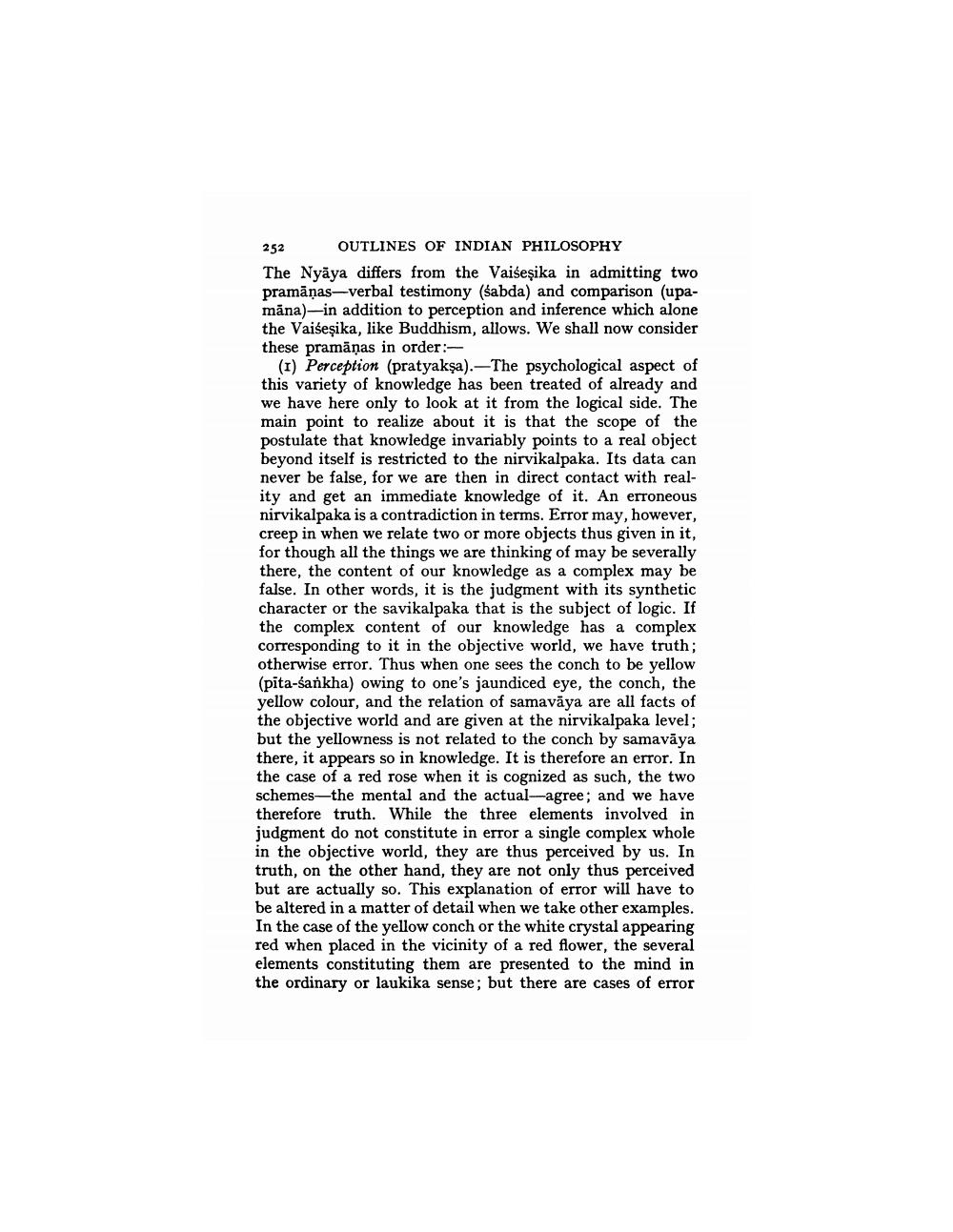________________
252 OUTLINES OF INDIAN PHILOSOPHY The Nyāya differs from the Vaiseşika in admitting two pramānas-verbal testimony (sabda) and comparison (upamāna)-in addition to perception and inference which alone the Vaišeşika, like Buddhism, allows. We shall now consider these pramāņas in order :
(1) Perception (pratyakşa).—The psychological aspect of this variety of knowledge has been treated of already and we have here only to look at it from the logical side. The main point to realize about it is that the scope of the postulate that knowledge invariably points to a real object beyond itself is restricted to the nirvikalpaka. Its data can never be false, for we are then in direct contact with reality and get an immediate knowledge of it. An erroneous nirvikalpaka is a contradiction in terms. Error may, however, creep in when we relate two or more objects thus given in it, for though all the things we are thinking of may be severally there, the content of our knowledge as a complex may be false. In other words, it is the judgment with its synthetic character or the savikalpaka that is the subject of logic. If the complex content of our knowledge has a complex corresponding to it in the objective world, we have truth; otherwise error. Thus when one sees the conch to be yellow (pita-sankha) owing to one's jaundiced eye, the conch, the yellow colour, and the relation of samavāya are all facts of the objective world and are given at the nirvikalpaka level; but the yellowness is not related to the conch by samavāya there, it appears so in knowledge. It is therefore an error. In the case of a red rose when it is cognized as such, the two schemes—the mental and the actual-agree; and we have therefore truth. While the three elements involved in judgment do not constitute in error a single complex whole in the objective world, they are thus perceived by us. In truth, on the other hand, they are not only thus perceived but are actually so. This explanation of error will have to be altered in a matter of detail when we take other examples. In the case of the yellow conch or the white crystal appearing red when placed in the vicinity of a red flower, the several elements constituting them are presented to the mind in the ordinary or laukika sense; but there are cases of error




